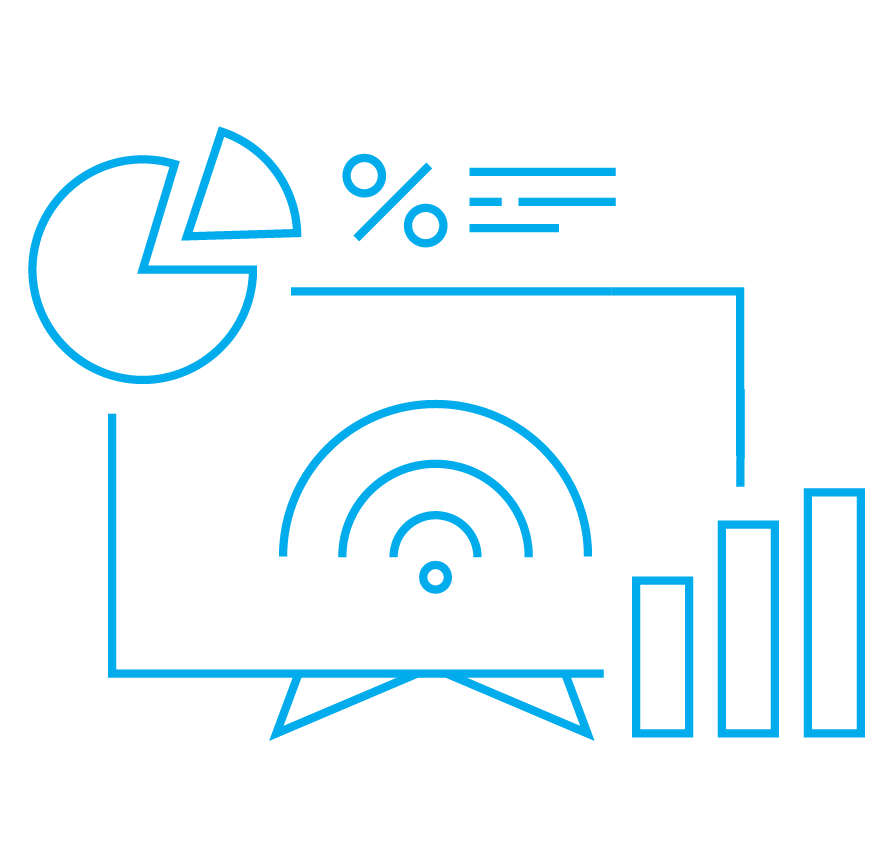- Programmatic market based on cookies is huge and still growing
- Publishers will lose 52% of revenues after disabling 3rd party cookies
- Chrome will not disable 3rd party cookies
- A 3rd party cookie is not the same as 3rd party data
- What is a cookie?
- What will the future of digital advertising bring?
Overview:
- Programmatic market based on cookies is huge and still growing
- Publishers will lose 52% of revenues after disabling 3rd party cookies
- Chrome will not disable 3rd party cookies
- A 3rd party cookie is not the same as 3rd party data
- What is a cookie?
- What will the future of digital advertising bring?
3rd party cookies are blocked by some of the top browsers. Privacy regulations, such as GDPR or CCPA, make advertisers think twice before they use audience data for targeting. On the other hand, the programmatic market is growing fast all over the world, and this trend will continue in the following years, according to Zenith. So, should marketers be really worried about using cookies or keep calm and do programmatic? Let’s check facts and distinguish myths from reality.
Programmatic market based on cookies is huge and still growing
Programmatic is 84 billion dollars market globally and, according to Zenith’s report, it will grow to hit $98 billion next year. European programmatic market is growing at a double-digit rate (+17% YoY in 2018) and hits 16 billion EUR, according to IAB. The huge programmatic market is based on audience data which are stored with help of cookies. This shows that the cookie targeting is crucial for today’s online campaigns.
In media, there are many articles about programmatic ads and cookies usage that can cause confusion among advertisers. Because of introducing 3rd party cookies blocking technology, such as an Intelligent Tracking Prevention (ITP) by Safari browser, the digital market is worried about the future of the advertisement that is based on the audience data. Moreover, Firefox has its own solution for blocking 3rd party cookies. Google and Microsoft work on a technology that is aimed to improve privacy and may affect 3rd party cookies.
On the other hand, the market’s share of a browser that currently blocks 3rd party cookies is not too big, and equals 20%, according to StatCounter. It means that currently 80% of browsers support cookies and help to collect data for targeting programmatic campaigns.
Moreover, cookies help to deliver targeted ads tailored to users’ preferences. According to the IAB, 71% of consumers prefer ads to be targeted to their interests and shopping habits, and 3 out of 4 consumers prefer fewer, but more personalized ads. It confirms that users want the benefits of cookies usage in the online environment.
Publishers will lose 52% of revenues after disabling 3rd party cookies
When we are talking about blocking 3rd party cookies, we should take a look at the study conducted by Google. They wanted to quantify the effect of disabling the third-party cookies that would have on the programmatic ad revenue for publishers. As a result, the average revenue decreased by 52% for the top 500 global publishers.
The important thing we need to point during the analysis of the cookie-based advertising is the position of the key market players. Google is an owner of a dominating browser on the market, which means, it is the main source of users’ data for all ad tech sectors. So, after disabling cookies, a company can be sued for violating competition laws and using its dominating position on both advertising and analytical market.
Therefore, disabling the third party cookies in Chrome (Google) by default may seriously hurt the company itself, which means multi-billion-dollar fines.
Chrome will not disable 3rd party cookies
After reading some articles in media or listening to speeches during online advertising meetings, you’ve probably heard about changes to the Chrome browser that Google will introduce in February 2020. Some journalists and marketers, misinterpreting the news, concluded that all 3rd party cookies will be blocked. We need to say it loud and clear: it is not true. Google will not disable 3rd party cookies in February 2020, but yes – the company will introduce some changes affecting this type of cookies. What exactly will change?
Google announced that it is working on improvement of privacy, and the changes mentioned before are connected to this statement. What the company is going to do is to mark the 1st party and 3rd party cookies. Users will have the possibility to delete all 3rd party cookies. They will be able to do it after clicking a button in options – an activity similar to deleting cookies now in popular browsers. This step won’t affect online advertising business in the large scale – it won’t delete cookies – it just allows users to clean their browsers. We can compare the announced functionality to the do-not-track or opt-out mechanisms.
A 3rd party cookie is not the same as 3rd party data
Articles in media may be not clear and make the marketers confused about cookie-based advertising. Furthermore, the meaning of a few terms is crucial for understanding the entire discussion. Let’s take a look at the differences between the 3rd party cookies and the 3rd party data.
Simply speaking, the 3rd party data is data from external data providers. It sounds similar to the 3rd party cookies, but those are completely different types of data. The 3rd party data includes all the information that data providers can collect from partners, publishers, research companies, social media plugins, etc. Every data sold by them is called the 3rd party data. They can consist of demographic characteristics, geolocation, interests and buying intentions of visitors.
The 3rd party cookie is a cookie created by a domain other than a user visits. For example, when a user visits a website with a social media plugin implemented, the plugin may create a cookie in which there are stored information about users’ likes and shares.
3rd party cookies may also be used as a transmitter to deliver data to DSPs, and this applies to 1st, 2nd and 3rd party data. On the other hand, you may exchange 3rd party data even if you don’t use cookies at all. In other words, 3rd party data describes the source of data and 3rd party cookie is about the technology used to deliver data. They don’t need each other to exist.
What is a cookie?
The advertising potential of cookies was discovered a long time after cookies were implemented into the web environment and used originally. The basic purpose of the cookie usage is to customize a website in terms of user’s preferences, but not to track and target users with personalized ad. The advertising industry adapted this file since it was the most suitable tool for ad purposes.
A cookie is a file created on your device by the browser you use for surfing the Internet. Its purpose is to remember the language that you choose for the web interface, login session id, and items that were added to the shopping basket in a store. How does the cookie work in advertising? It helps to detect a user as a potential car buyer, as long as user’s browser history is full of websites with automotive subjects.
Besides certain vehicle enthusiasm, cookies, as IDs holders, can help to deliver more information about users, such as current interests and intentions based on their online behavior and visited websites. It enables marketing algorithms to show personalized ads for this particular group of users, and not to annoy them with ads of products they do not find interesting.
What will the future of digital advertising bring?
The digital environment changes dynamically, especially now, when California Law is so close and while the privacy changes are being developed in browsers, such as Safari, Firefox, Edge and Chrome. Therefore, marketers do not know if and how the ad-tech sector may change in the future. As a result, declaring to have the knowledge to deal with those cookies, companies may presently offer only fragmentary solutions that do not meet the needs of the whole digital advertising market based on online IDs.
There are some market initiatives created to solve the problem of identification of online users and narrow the number of potential synchronization between market participants. We can mention, for example, The Trade Desk Unified ID, Advertising ID consortium or DigiTrust TechLab IAB. Nonetheless, all of them are based on cookies, so they are not the solution for the ITP.
Publishers may start using their own IDs, but the market requires a universal ID that can be easily verified. If 3rd party cookies are disabled, companies will lose this opportunity. As a result, two major problems will appear:
1. Impact on ad serving tools and ad targeting
counting of the number of Unique Users for capping purposes will be very complicated, especially for ad servers. It will lead to overcounting users or even reporting a fake traffic. What’s more, some browsers, such as Safari or Firefox, will instantly increase the number of their users, but it will be a not real number. One user will generate a cookie every time a browser is opened.
As a result, online campaigns will become much less efficient and marketers won’t be sure if they’re reaching a real user or just a fake cookie.
2. Impact on transparency
if statistics of any website cannot be verified by a 3rd party partner, there will be a really serious risk that new fraud mechanisms will be introduced. Publishers will lose revenues because of an ad fraud, and marketers as well as agencies will see a significant drop in campaigns’ efficiency because of the fake traffic.
What can marketers do now to prepare for the future of advertising? Visions of global digital market leaders, such as Google, The Trade Desk or Adform have strong similar points. They aim at protecting users’ privacy, giving them the tools to control the privacy and keeping the advertising ecosystem at least as effective as it is now. If we take a look at cookies, the fact is that this technology needs improvement and digital market organizations, such as IAB Tech Lab, are preparing new, better solutions for identifying online users (similar to the one we know from mobile devices – Advertising ID).
No matter what the future will bring, we should remember that a cookie is just a form of information about online users’ behavior. It can be replaced by other market standard, but it has to be developed and widely used by all market participants. If the other form of ID is invented, the OnAudience.com DMP technology will be ready for it.



